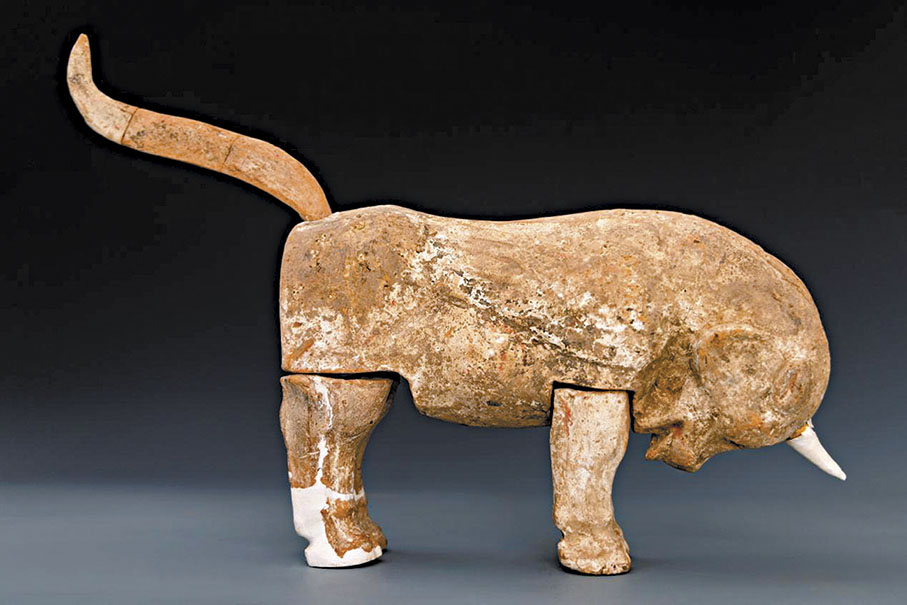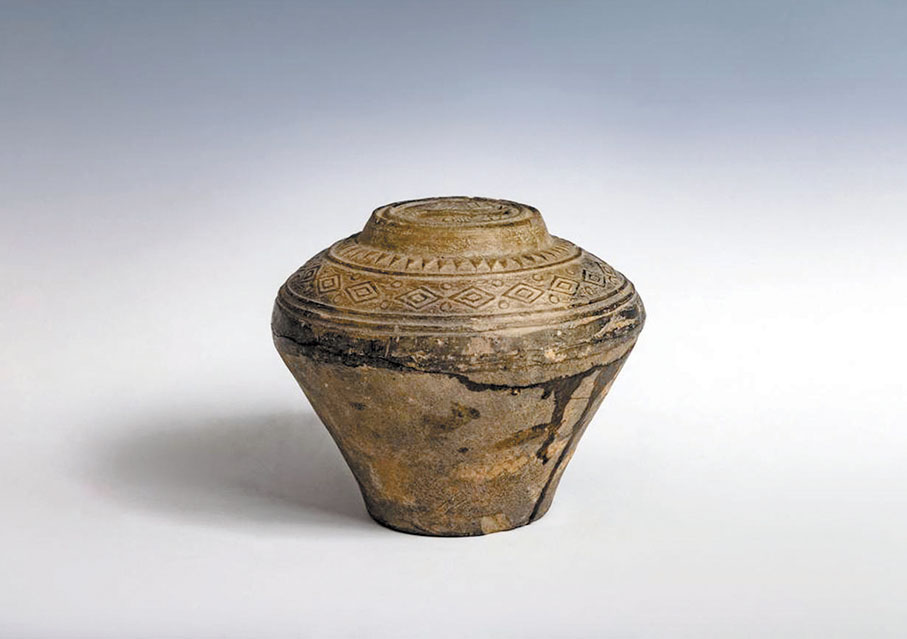【NewsBuddy】文物蘊藏歷史 銅鏡反映廉政


【原文】摘錄自2023年12月29日香港《文匯報》象徵司法「正大光明」的「獬豸」(音xiezhi)、寓意潔身自好守規矩的青銅「規矩鏡」、警示世人皆要思正道莫入歧途的「撲滿」……日前,《漢風廉韻——漢代廉政文化特展》 在漢景帝陽陵博物院開幕。92件(組)來自陝西3地市11家文博單位的漢代廉政文物,不僅讓觀眾透過文物背後的故事,深入解讀漢代廉政文化,同時更超越時空限制,開闢了廉政文化教育體驗的新空間。
廉政思想是中國傳統文化中的重要組成部分,它強調官員應該具有清正廉潔、公正無私的品質,為民眾謀福利。本次《漢風廉韻——漢代廉政文化特展》由陝西省文物局舉辦、漢景帝陽陵博物院承辦,分為漢代廉政思想、廉政制度、廉政文化、廉政人物四個單元。展品不僅有反映民本思想的銘文瓦當、銅鏡、各類農具,還有代表廉政制度的印章、封泥、錢幣、度量衡,以及表現廉政文化內涵的獬豸、玉蟬、撲滿、節約等文物。
漢景帝陽陵博物院希望通過具有一定學術性、原創性、創新性的特殊展覽,打破常規,解讀文物背後的廉政文化內涵,形象化展示廉政內容、廉政文物以及廉政故事。院長李舉綱表示,用文物講好廉政故事、闡釋中華優秀傳統文化中廉政文化的豐富內涵和時代精神,具有重要的現實意義。《漢風廉韻》展以漢代為明確時段,以文物、文獻、人物相結合的方式,解讀漢代廉政文化,兼具政治性、文化性和藝術性,給人以深刻思考和有益啟發,是一次具有現實意義的較高質量文物展覽。
西漢雖然在基本治理制度上多繼承秦制,但漢武帝時期極力推行「廉吏」規範和風尚,舉孝廉成為最主要的察舉仕進制度,也形成了有效的廉政制度和廉政傳統。展覽第二單元「法平則吏無奸(廉政制度)」,以圖表、法規條文以及相關制度性文物,詮釋了漢代多維度監督監察監管體系的構建,以「孝」「廉」為主要標準的選官途徑的確立,以及貨幣制度的規範等等廉政制度的基本面貌。
獬豸是中國古代神話傳說中的神獸,祂不僅擁有很高的智慧,且懂人言知人性,能辨是非曲直,能識善惡忠奸。一旦發現貪墨不法的官員,便會以角觸奸邪。從漢代起,獬豸成為司法「正大光明」「清平公正」的象徵,司法機構的執法者一般會頭戴獬豸冠。
西漢對廉政制度進行了重大發展,實行監察權與行政權的分離,從中央到地各級政府均建立了相對獨立的監察機構,使各級官吏和行政部門都處在有效監督之下。漢代能得到認可的法官,並不以通曉法律文書為唯一標準,而是除了才智能力以外,要能明辨是非,彰顯公平和正義。
此次展覽展出的「正義神獸」獬豸,不僅體現了漢代廉政制度的核心思想和時代因素,同時也體現了人們對公平、正義的美好嚮往。
Artefacts Embody History, Bronze Mirror Reflects Integrity
【譯文】With the exhibition of Xiezhi, the symbol of justice, the bronze "rule mirror" that symbolizes a clean body and rules, and the "piggy bank" that warns the world to think right and not to go astray, The "Han Style and Integrity - Han Dynasty Integrity Culture Special Exhibition" was recently opened in the Han Jingdi Yangling Museum. Ninety-two pieces (groups) of Han Dynasty integrity artefacts from 11 cultural heritage units in three cities in Shaanxi, not only allowing the audience to deeply interpret the Han Dynasty integrity culture through the stories behind the artefacts but also transcending the limitations of space and time, opening up a new space for the experience of integrity culture and education.
The idea of integrity is an integral part of traditional Chinese culture, which emphasizes that officials should have the qualities of honesty, integrity, fairness and selflessness to work for the welfare of the people. The "Han Style and Integrity - Special Exhibition on Integrity Culture in the Han Dynasty" is organized by the Shaanxi Provincial Cultural Heritage Administration and hosted by the Hanyangling Museum, which is divided into four units, namely, the ideology of integrity in the Han Dynasty, the system of integrity, culture of integrity, and integrity figures. The exhibits include not only inscribed tiles, bronze mirrors, and agricultural tools reflecting the idea of the people but also seals, seals, coins, weights and measures representing the system of honesty and integrity, as well as Xiezhi, the Jade Cicada, Pumon, and temperance expressing the connotations of honesty and integrity culture.
Hanyangling Museum hopes that through a particular academic, original, innovative special exhibition, break the routine, interpretation of cultural heritage behind the connotation of the culture of honesty and integrity, and visualization of the content of honesty and integrity of cultural relics, as well as honesty and integrity of the story. President Li Juzhang said that using cultural relics to tell a good story of integrity and explain the rich connotation of Chinese traditional culture of integrity culture and the spirit of the times has an important practical significance. The exhibition of "Han Style and Lian Yun" takes the Han Dynasty as a precise period and interprets the culture of honesty and integrity of the Han Dynasty by combining cultural relics, literature and characters, which is both political, cultural and artistic, giving people deep thoughts and valuable inspiration. It is a high-quality cultural relics exhibition of practical significance.
Although the Western Han Dynasty inherited much of the Qin system of governance, the Han Emperor Wu Di vigorously implemented the "honest officials" standard and style, and the election of filial piety and honesty became the most crucial system of investigation and advancement, which also formed an effective system of honesty and tradition of honesty. The second unit of the exhibition, "When the Law is Equal, the Officials are Free from Evil (Integrity System)," uses diagrams, statutory provisions, and related institutional artefacts to explain the establishment of a multi-dimensional supervisory and regulatory system, the establishment of an official selection system based on the criteria of filial piety and honesty, and the standardization of the monetary system, all of which are essential aspects of the integrity system in the Han Dynasty.
Xiezhi is an ancient Chinese mythological beast with high intelligence, understands human language and nature, and can recognize correct and wrong, good and evil, loyalty and betrayal. Once it found a corrupt official, it would use its horns to touch the evil one. From the Han Dynasty onwards, the Xiezhi symbolized justice, and those who administered justice would usually wear a Xiezhi crown.
The Western Han Dynasty saw a significant development in the integrity system, with the separation of supervisory and administrative powers and the establishment of relatively independent supervisory bodies at all levels of government, from the central to the local level, so that officials at all levels and administrative departments were under adequate supervision. In the Han Dynasty, the only criterion for a judge to be recognized was not to be proficient in legal documents but to distinguish between right and wrong and to demonstrate fairness and justice, in addition to intelligence and ability. The Xiezhi, the "god of justice," on display in this exhibition, embodies the core idea and contemporary elements of the Han Dynasty's integrity system and the people's desire for fairness and justice.
◆ Tiffany
